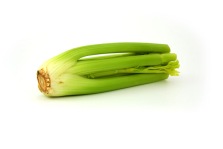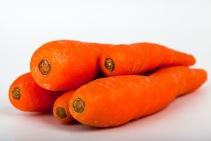Vegetables Juicing vs Raw Eating
 Celery as a source of sodium chloride
Celery as a source of sodium chloride
Juicing? No thanks I will eat my vegetables raw.
Is this a good attitude? It sounds pretty logical, and although it is totally acceptable, there is a downside to this eating habit.
Solid food needs several hours of digesting and decomposing in order to be acceptable for nourishing on cellular level. And you probably guess this already – the juices don’t.
Table of Contents
The Fibers in our Food
What juicing does is getting rid of the fibers contained in the vegetables and fruits. Therefore the juices are absorbed much quicker. They get assimilated very easily with minimal effort, and the nourishment is available almost instantly to the whole array of cells in the body. The exertion on the part of the digestive system is also very fast. The next logical question is the following. Should we stick only to the juices, then?
No! You should also take some raw food in parallel to your drinking juices. Whereas the fibers have virtually no nutritional value, they serve another important purpose – they act as cleaners and sweepers of the whole digestive tract, and especially they are beneficial to the intestines. Let us consider an example. A cup of unprocessed carrots contains roughly 7 grams of fiber. On the other hand, a cup of carrot juice is almost totally devoid of fiber.
The Dietary Reference Intakes (DRI) for Fiber is around 25 to 40 grams per day for a grown-up person. Check the exact DRI values here.
The Benefits of Juicing
Let us go a step further. What happens when the vegetables are cooked? When they are raw, we have seen that the fibers act as an intestinal cleansing agents. When processed or cooked, the fibers have lost their vital potential, and they might even leave coating on the inner walls of the intestines. Not to mention that the heat from cooking vegetables devastates the enzymes present there.
One example that points out the benefits of vegetable juicing over raw eating is often cited in the literature.
Celery possesses a high NaCl content. Sodium chloride comes handy when you are exposed to extreme heat. Raw eating the celery would suggest hours of digesting before the positive effects can be felt. But drinking already prepared fresh celery juice – that’s another story. You will get the boon almost instantly.
Nutritional vs Bodily Enzymes
The fruit and vegetable juices are littered with nutritional enzymes. Our body, composed out of countless cells and various tissues, possesses its own enzymes. They perform a whole range of beneficial tasks. You see, we all already have a great number of enzymes present in the stomach, intestines, and other organs. The additional enzymes we absorb via the juices can only help as they work in conjunction with the already present ones.
Let us then, preserve these valuable little fellows and take advantage of their free given help. You need not stop eating cooked food. You have to continue eating raw food. But it is important for you to include also vegetable and fruit juices if you mean to have a balanced diet.



Leave a comment